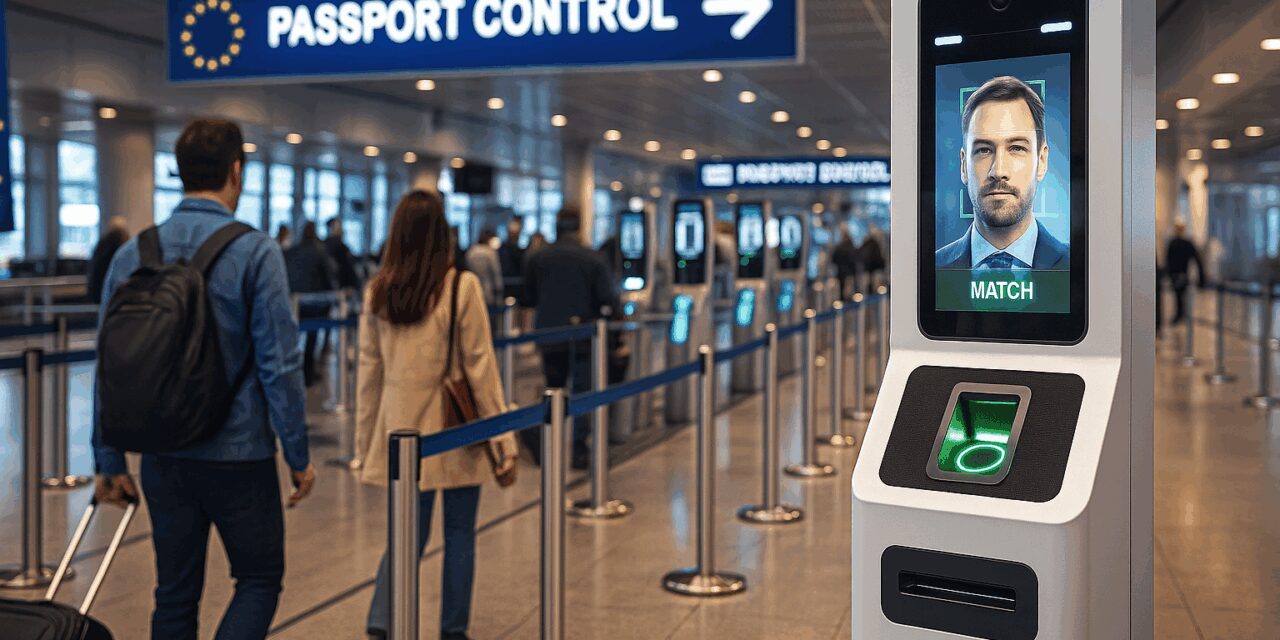The European Union will begin rolling out its long-awaited Entry/Exit System (EES) on October 12, 2025, ushering in a new era of digital border management for visitors from non-EU countries…
The scheme, delayed several times since its initial conception, will be introduced gradually across member states until it is fully operational by April 10, 2026.
Under the new system, most travellers entering the Schengen area will need to register their passport information and biometric data, such as fingerprints and facial scans, at a dedicated kiosk when crossing the border for the first time. The information will be stored for three years and checked against security databases. Visitors may also be asked to confirm they have accommodation, funds, and onward travel plans. Refusal to comply will mean denied entry.
As reported by The Times, the EES is intended to speed up travel in the long run by replacing manual passport stamps with digital records, ensuring compliance with the 90-days-in-180 rule while enhancing security. In practice, however, delays are expected in the early months as passengers navigate the registration process, particularly at UK points of departure where “juxtaposed controls” apply; namely Dover, London St Pancras, and Folkestone.
The system will cover 25 of the 27 EU states, plus Iceland, Norway, Liechtenstein, and Switzerland. Ireland and Cyprus will continue with manual checks. However, Monaco residents are fully exempt from the new border rules. This exemption also applies to citizens of Andorra, San Marino and the Vatican, as well as Monégasque and Andorran residents holding EU residence permits or long-stay visas. They will continue to cross as they do today, without biometric registration or EES questioning.
Infrastructure upgrades are already under way. Dover is creating a processing area on reclaimed land at the Western Docks, Eurostar has expanded its St Pancras check-in to 49 registration booths, and LeShuttle is building a drive-through facility with more than 100 kiosks. European airports will also adopt the new technology, though smaller hubs may face bottlenecks.
The EES will eventually link to the EU’s separate Etias visa-waiver scheme, now expected in late 2026. Together, the two systems will redefine how millions of travellers move across European borders, promising smoother journeys, but only after the growing pains of implementation.


